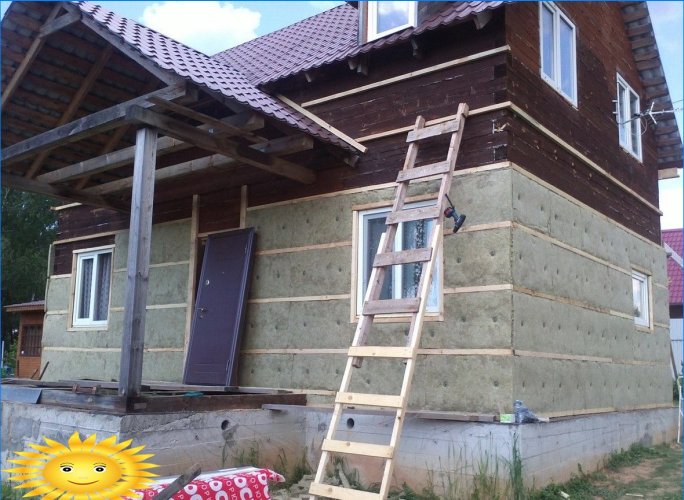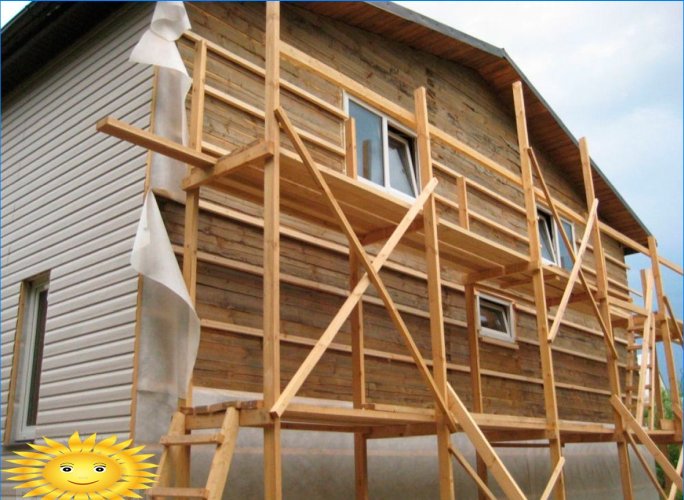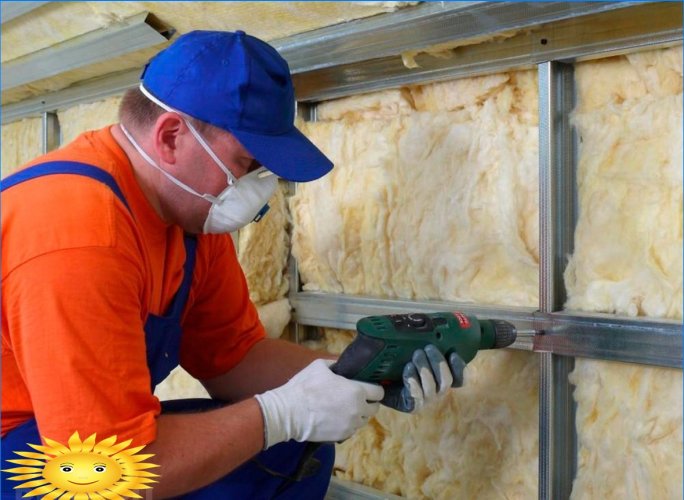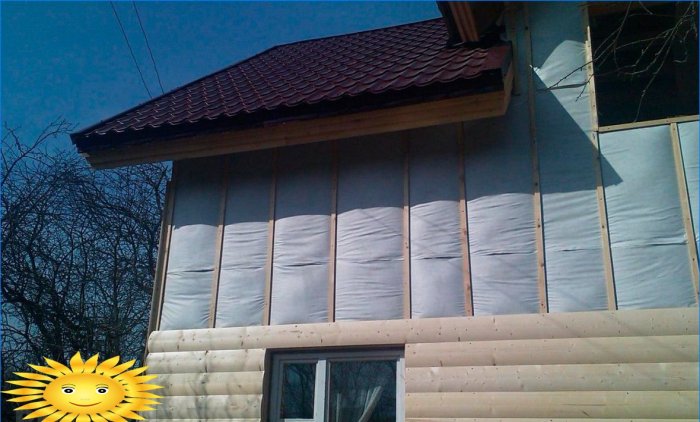Wooden houses are beautiful in themselves, usually the owners do not want to hide such a facade. However, it is often necessary to insulate a house from timber and logs in order to create a comfortable atmosphere and save on heating. Our site of tips decided to collect typical mistakes when insulating wooden houses.
Most often, the reason for the need to insulate the walls of a wooden house is the insufficient thickness of the walls and the wear of the structure itself. For example, according to SNiP 23-02-2003 “Thermal protection of buildings”, the thickness of the massive walls of the house must be at least 30 centimeters. That is, both the timber and the logs must be sufficiently thick..
In addition, there will always be cracks in a house made of timber! In the case of using high-quality laminated veneer lumber, the total area of the slots will be comparable to a slightly open window, which is not critical. But if the house is built from an ordinary profiled timber, then the area of all cracks will already be compared with an open window. Is it possible to warm up such a house? Yes, but not for long. Heating costs will rise.
In a log house, the joints between the logs will be the main problem. In the early years, the house will shrink, the cracks may open. Yes, you did the caulking, we believe. But you have to repeat this process again. And, most likely, a year later again. In order not to engage in caulking all the time, the owners sometimes decide on a thorough wall insulation.
Important! In general, according to experts, the annual caulking of joints between logs and sealing of cracks in a house from a bar can replace the use of a continuous layer of insulation. But this is if your walls are thick enough. And the wood hasn’t worn out yet. We strongly recommend using a thermal imager to identify problem areas and not to repair the entire facade..
So, we found out the reasons for the need to insulate a wooden house. Now let’s talk about what mistakes are most often made in the process of this work..
The first mistake
Proceed with the insulation of walls that are affected by bugs, fungus, just have not dried out yet. Think for yourself, you will close access to wood, moisture will remain under the insulation, the fungus will feel great. Be sure to inspect the walls before insulating them, replace the fragments of logs that have rotted, if necessary, install new lower crowns. All walls need to be treated with antiseptics, for fidelity twice! And then wait for the wood to dry. So it is best to insulate a wooden house in late summer or early autumn, after having carried out repairs, processing and drying..
The second error
Choose the wrong insulation. Expanded polystyrene is very popular today. But, according to experts, wood is absolutely not on friendly terms with synthetic materials! It is highly desirable to choose natural, “breathable” materials for insulating a wooden house. Mineral and basalt wool is ideal. And with expanded polystyrene, you can insulate the basement, the foundation, only here in this case it will be appropriate.
Error three
For facade insulation, you cannot choose material in rolls and soft mats! On a vertical surface, over time, they will simply slide, sag, and gaps will appear – “cold bridges”. Buy mineral wool, basalt wool in dense slabs, rigid mats that will retain their shape on the wall for many years. Roll materials are suitable exclusively for insulating horizontal surfaces.
Mistake four
A negligent attitude towards insulation. You need to unpack mineral wool slabs under a canopy or in the house itself. Get wet – lose their properties. Then, when the insulation is already on the facade, you should go to its cladding as quickly as possible so as not to fall under the slanting summer rains.
Fifth mistake
Violation of the technology of the “cake” of the insulated facade and too thin a layer of insulation. As for the thickness of the insulation, for the southern regions one layer 5 centimeters thick will be enough, for the central regions of our country – two layers, that is, 10 centimeters, but for the northern regions, three layers should be taken, 15 centimeters thick. This rule applies to both log houses and timber buildings. As for the “pie”, it is necessary to strictly adhere to the following rule – from the side of the wall of the house there are layers with reduced vapor permeability, and outside – with increased. And don’t forget about the ventilation gap that remains between the insulation and the cladding. The portal devoted a separate article to the vapor barrier.
Important! Many people call the installation of insulation from the inside, indoors, as a typical mistake when insulating a wooden house. Yes, in most cases it is insulation outside, along the facade, that is the most effective, and often the only option. But for wooden houses, this is not a critical mistake! It is quite permissible to insulate log cabins and houses made of timber from the inside, experts say. Inside a wooden house, for the purpose of wall insulation, experts advise using environmentally friendly materials such as linen mats, ecowool, Isoplaat, as well as dried coniferous sawdust mixed with lime.
For the finishing of the insulated facade of a wooden house, designers advise choosing a block house. Of course, also made of wood, to preserve both the appearance and the properties of your home. And yet, when insulating the facade, do not forget that the floor and roof of a wooden house also need your close attention..
Typical mistakes when insulating a wooden house
Insulating a wooden house correctly is essential for energy efficiency and comfort. This post outlines common mistakes to avoid when undertaking this process. These mistakes include insufficient ventilation, not reading installation instructions, inaccurately estimating insulation thickness, and not looking for other ways to increase insulation. Awareness of such mistakes and proper research before undertaking insulation can save time, money, and excessive energy bills.
House and cottage, suburban construction








What are the common errors one should look out for when insulating a wooden house to ensure optimal insulation and prevent potential damages or inefficiencies?